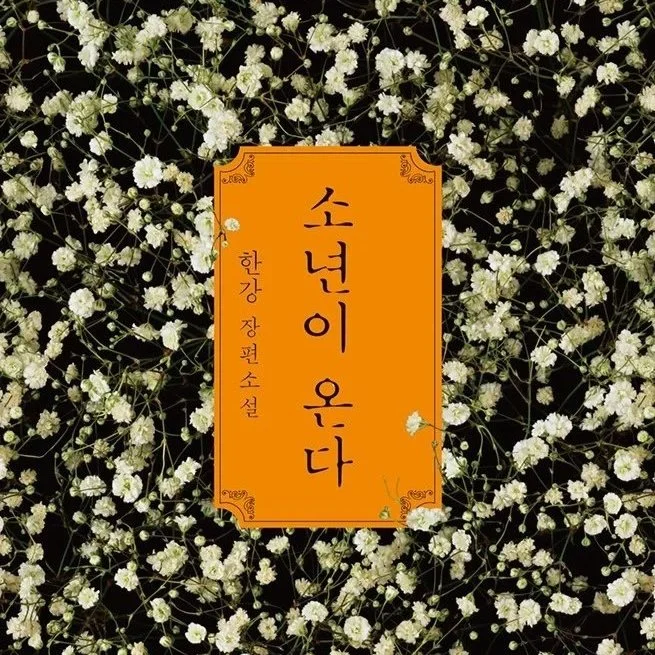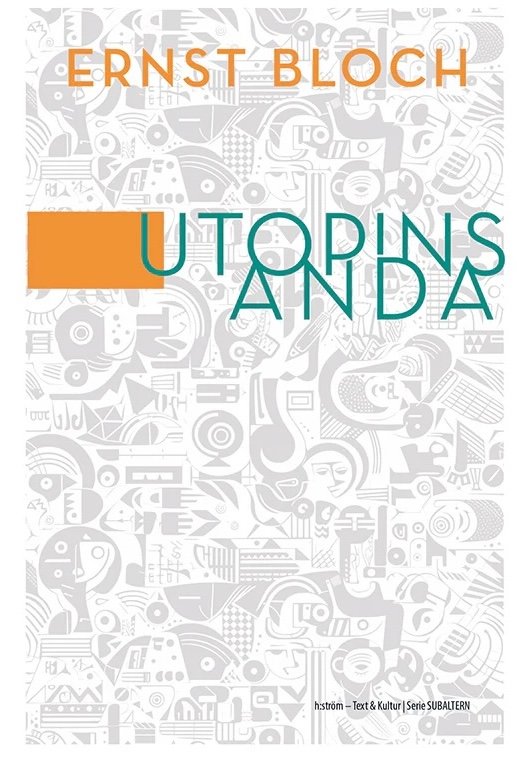An Invitation to Social Death: Afropessimism and Posthegemony, Archipolitics and Infrapolitics
/I have been prompted to present a better explanation of the notion of posthegemony, which was used in a recent article posted here (Gerardo Muñoz and Alberto Moreiras, “Podemos’ Failure: The Inadequacy of ‘Hegemony’”). I am pleased to do it in reference to a mostly North American theoretical tendency developed in the context of Black Studies, which goes by the name of Afropessimism. It is beyond the scope of this article to rehearse a serious presentation of Afropessimism. As my interest is only to argue for its relevance to posthegemonic practice, I will simply highlight some aspects of it, themselves contested. This piece is a mostly improvisational explanation, or adventure, for which I apologize in advance, but space and time constraints allow for nothing else at the moment. I am certainly taking a risk—my intention is neither the instrumentalization nor the subsumption of Afropessimism under the umbrella of posthegemony. But I am willing to assume the risk and whatever consequences it might entail.
In a recent essay, “Populism Is Not Hegemony: Towards a Re-Gramscianization of Ernesto Laclau” (Theory & Event 23.3 [2020]: 765-86), Samuele Mazzolini claims that Laclau’s theory of the political is reductive, particularly as it concerns hegemony theory. And that it therefore needs to be “re-gramscianized.” Mazzolini rejects Laclau’s claim about the identification of populism to hegemony to politics. He calls for a restitutive de-identification of the three terms. Fundamentally, for Mazzolini, Laclau’s notion of hegemony is too simple, or excessively simplified, as it points towards an ever punctual and contingent bid for power without the necessary social depth. This is the reason why Laclauian hegemony is doomed to pass every time, that is, politically to fail, always to end up in its own desubstantialization, as it has happened both to Podemos in Spain and to the different Latin American pink tide governments, who were unable to capitalize on any properly constructed socially hegemonic depth. For Mazzolini the only half-successful hegemonic articulation from the left in relatively recent times was the one almost accomplished by the Italian Communist Party in the years after World War II and until the 1970’s. Yes, the PCI ultimately failed, for other reasons, and did not reach its primary political objective. In the process, however, it was able to sustain a long and almost successful hegemonic struggle.
Hegemony, then, for Mazzolini, who is following Gramsci, is and can only be the long pedagogical march towards communist society, always led by a minority elite, an intellectual class, whether it is communist party cadres or the duly committed members of the academic intelligentsia and its pedagogy of the politically correct. Only through a long and successful internalization of the awareness of good politics could we ever accomplish proper hegemonic change, and such an internalization can only be a function of sustained pedagogic interventions cutting through time, institutions, and social classes. The rest is perhaps populism, as a fleeting and unrooted or ungrounded move towards a quick political change that will leave, alas, the underlying structures unchanged, thus dooming itself. Mazzolini’s diagnosis is good but the prognosis (that is, “without an endless Gramscianism nothing real will be accomplished”) is not just rather boring but also misguided. Witness the state of play in the North American university, where there has been an obvious ideological dominance of the left since the 1980s, only to get Donald Trump and full corporatization forty years later. And counting. So pedagogy be damned, that cannot be the way to go. And yet, the more I read in and about current Gramscians, the more convinced I am that is the only thing they can come up with in their quest for political power.
What is summed up in or by the notion of infrapolitics is at the same type the analysis and the subversion of the myriad micropractices of everyday life in every region of life, at the existential and the social level, which are levels that are obviously not independent from one another. Politically, what is summed up by its companion concept, posthegemony, is an operationalization of political practice in every case, whose primary object is not persuasion, not the establishment of consent, not pedagogy of any kind, not the move towards any accomplishment of genuine or deluded agreement. Instead, posthegemony proposes a practice of general dissensus, that is, a refusal of hegemonic intrusion in singular life (whether personal or collective), wherever it comes from. This results, or should result, in political practice understood as the permanent negotiation of conflict on ever pragmatic, that is, tactical grounds, and in view of whatever is possible at every given conjuncture, and at every step in the conjuncture. Posthegemony gives up on hegemonic pedagogy, which it denounces as only ever committed to domination, whether it is the sedimented pedagogy of the status quo or the politically correct pedagogy of the converted. It postulates an emancipation from the state apparatus, which includes an emancipation from any counterhegemonic inversion of the state apparatus. To that extent it affirms or presupposes a “communism of intelligence” in Jacques Rancière’s terms. For posthegemony, pedagogy is for the birds. Posthegemony is an operational indicator for political practice, not a political doctrine. Its strategy is the accomplishment of democratic equality both now and for the future, but tactically it prescribes nothing beyond the permanent use of thought at the service of a (pragmatic) refusal of domination, formally defined as hegemonic intrusion in singular life.
Posthegemony is therefore perfectly capable of unleashing a new political sequence based upon the equalitarian symbolization of the social. But only as a result of the abandonment of the policies of hegemonic intrusion that seem to be all the left is capable of providing us with nowadays (paradoxically prompting, not consensus, but a radical if not terminal dissensus, as the recent results for Podemos in Galicia and the Basque Country show). If an example of posthegemonic thought and practice were needed, the example I can adduce is Afropessimist practice. Afropessimism is a radical position marked against “the death of Black desire,” which is a function of the three fundamental aspects of political terror in contemporary societies. From the position that Black life is the radical constitutive outside of humanity, the radical other of the Human, Frank Wilderson presents the three terrors succinctly in his recent Afropessimism (New York, Liveright, 2020). They are, first, the terror of political society as embodied by the police apparatus, the military apparatus, and the incarceration regime; the terror of hegemonic force as embodied institutionally by the mainstream media, the university, the churches; and, finally and most polemically, the terror of “counter-hegemonic and revolutionary thought: the logic of White feminism, the logic of working-class struggle, the logic of multicultural coalitions, and the logic of immigrant rights. The unrelenting terror elaborated whenever Black people’s so-called allies think out loud” (220). It is clear that Wilderson is not out to make many friends, and nevertheless his words should be heard. Not just hegemony but the counter-hegemonic positions of the social left enjoy powerful narratives, which they constantly build upon at the expense of subaltern life as embodied by Black desire. If political narrative is organically anti-Black, as Wilderson claims, this has two difficult implications. Political narratives would always be about contingent violence, not about the gratuitous violence that assails Black life. For Blacks, violence is always already totalizing, which “makes narrative inaccessible.” If the Human is “a construct that requires its Other in order to be legible” (ix), all narrative coherence evaporates: so-called Human narrative is inconsistent as it avoids and preempts, or falsifies, a thematization of the abjected Black other: this absence spectralizes and destroys narrative form even if narrative form remains unaware of its fundamental and constitutive exclusion or precisely because of it. And Black narrative is also impossible because there can be no narrative of epistemological catastrophe. There can be stories, but they will not be conceptually coherent. They will be broken stories. Narrative subjects, particularly those in a political narrative, are always parasitic on Black suffering. A liberation from all social fictions, but particularly from the one that constitutes the fulcrum of Human life, namely, Black social death, implies a radical denarrativization. Narratives may be deemed to be always already (insufficiently) political, but this can only refer to Human narratives. Saying the structure of Black suffering, that is, cannot be political, cannot be conceptualized as primarily political. “It actually takes the problem outside of politics” (226). It is infrapolitical.
No wonder understanding this prompts a nervous breakdown. There is “sadism” as “a generalized condition [of political life]. . . in that pleasure, as a constituent element of communal life, cannot be disentangled from anti-Black violence” (95). The exit from sadistic narrative is a difficult one, as it does require an epistemological catastrophe, that is, the end of world. If so, then Afropessimism is an attempt to think, to use a phrase borrowed from Alain Badiou, “le reel impensé de l’epoque.” Its condition is to undo shackles: “The Black people were shackled to the cognitive maps of their well-meaning masters” (209). But undoing the shackle brings no redress, no redemption, as there is nothing (thinkable) to be put in place; there are no alternative cognitive maps. The “absolute dereliction” of Black life “cannot be made legible through counter-hegemonic interventions” (222). “Without the Black, one would not be able to know what a world devoid of redemption looks like—and if one could not conceive of the absence of redemption, then redemption would be inconceivable as well” (226).
This is what Afropessimism proposes to us non-Blacks: Given hegemonic and counter-hegemonic terror, the latter no less “essential,” “if a social movement is to be neither social democratic nor Marxist, in terms of its structure of political desire, then it should grasp the invitation of social death embodied in Black beings” (249). Even non-blacks, on occasion if not structurally, have had to contend or must contend with hostile and violent events that cannot be turned into any kind of conceptual coherence. There are times when consignment to social death, if not the physical one, is administered to you or to me because of some transgression, real or imaginary. But there are times when consignment to death, to the radical precarization of your life, traumatically, does not happen under the principle of sufficient reason. It exceeds it. Through a sadistic cathexis. The claim is that a sadistic cathexis rules every moment of Black life and organizes ceaseless social death. Saying it, through which act the Blacks become “worthy of [their] suffering” (328), is something. Once said, the issue of how it should orient our lives, politically and infrapolitically, is a matter of thought. Accepting the invitation of social death, as Wilderson prompts us to do by way of precarious alliance with Black life, does not of course mean accepting your own consignment to death. It rather means making it the existential basis of your thinking in order to resist it and fight it, to survive it, to move outside it. There are, to my mind, two fundamental ways of proceeding. I will call the first one “archipolitical” and the second one “infrapolitical.” Both of them are, for me, forms of posthegemonic practice.
What is the difference between saying “there is no Humanity, Humanity is not one,” as it excludes Black life, and saying “there is a Humanity, it is called Whiteness”? I think both statements come to the same, that is, to a humanism that posits itself always and ever in counterdistinction to its constitutive outside. The space of humanism has defined the space of modern politics, and it still does. And it is because there is a political, if not ontological, conflation of humanity with whiteness that the archipolitical statement about the necessary end of humanity becomes possible on the side of Black life. I call it archipolitical because it seems to me that Blackness, as a name, becomes in Afropessimist terms both the name of an extraordinary political power and the name for a dissolution of politics altogether. One historical example for this definition is of course the Nietzschean conception of “grand politics,” but this time it is enacted from a subaltern perspective. This is actually historically unprecedented in my opinion, at least in the languages of the West.
Blackness, in Afropessimist usage, is no longer a common name, but it takes on the character of a proper name. It is premised on an abyssal ground: it is at the same time a name of slavery and a name of freedom. There is something in Blackness as a proper name that exceeds slavery, and it is freedom: an excess that dissolves. That is the archipolitical gesture of Afropessimism: an extreme identification of political conditions that ruins politics and opens (itself up for) another sequence. It is an archipolitical gesture because it is a redoubling of the political stakes. When Afropessimism seeks primarily and for the most part the production of political effects through the very destruction of politics, Afropessimism is archipolitical. Stéphane Mallarmé used to talk about Igitur’s throw of the dice as the production of l’unique nombre qui ne peut pas être un autre. This is the Afropessimist throw of the dice. It is a declaration following which politics is not possible any more except as erasure and mystification. Politics is, in fact, from the perspective of Blackness (proper name), nihilism. Something else, a non-political insurgency, opens up in it. This is one of the possibilities of posthegemonic practice: archipolitical posthegemony. But there is another one.
I find no better way of introducing it than by quoting a long paragraph in Saidiya Hartman’s Wayward Lives, Beautiful Experiments (New York, Norton, 2019), another recent book associated with Afropessimism, in order to follow up with a comment on it:
Wayward, related to the family of words: errant, fugitive, recalcitrant, anarchic, willful, reckless, troublesome, riotous, tumultuous, rebellious and wild. To inhabit the world in ways inimical to those deemed proper and respectable, to be deeply aware of the gulf between where you stayed and how you might live. Waywardness: the avid longing for a world not ruled by master, man or the police. The errant path taken by the leaderless swarm in search of a place better than here. The social poesis that sustains the dispossessed. Wayward: the unregulated movement of drifting and wandering; sojourns without a fixed destination, ambulatory possibility, interminable migrations, rush and flight, black locomotion; the everyday struggle to live free. The attempt to elude capture by never settling. Not the master’s tools, but the ex-slave’s fugitive gestures, her traveling shoes. Waywardness articulates the paradox of cramped creation, the entanglement of escape and confinement, flight and captivity. Wayward: to wander, to be unmoored, adrift, rambling, roving, cruising, strolling, and seeking. To claim the right to opacity. To strike, to riot, to refuse. To love what is not loved. To be lost to the world. It is the practice of the social otherwise, the insurgent ground that enables new possibilities and new vocabularies; it is the lived experience of enclosure and segregation, assembling and huddling together. It is the directionless search for a free territory; it is a practice of making and relation that enfolds within the policed boundaries of the dark ghetto; it is the mutual aid offered in the open-air prison. It is a queer resource of black survival. It is a beautiful experiment in how-to-live. (227)
Can we then speak of the “wayward subject” as the subject of posthegemony? We may want to cross out the word “subject,” put it under erasure, since there is inevitably a dual distortion linked to the word: on the one hand, certainly in modernity, the equivalence of subject with citizen, on the other hand, the pretense that the subject rules absolutely over the object. The wayward subject (under erasure, crossed out) would reject both determinations—there is no claim to mastery, and there is no vindication of citizenship, which is always premised on subordination to the sovereign. In a recent interview Fred Moten, another important thinker of Black Study, says that Frank Wilderson could be taken to be the “last great theorist of the subject.” Wilderson’s position would be that blackness is the site of the non-subject that makes subjectivity possible: all subjectivity is parasitic on the black (non)subject. It would then seem that Wilderson’s theory of the subject is rather more like a countertheory, a theoretical destruction whose momentum might well come from waywardness as existential projection. This goes, it would seem to me, beyond the Lacanian theorization of the split subject—the wayward (non)subject does not accumulate in the last instance, does not recoup or redress, finds no passage to itself. So, my question: does the wayward (non)subject, whose historical possibility is social death, constitute not just an instance of posthegemonic practice but also itself as a “philosophical act”? Or is it, radically, an act of antiphilosophy?
In his 1992-93 seminar on Nietzsche Alain Badiou (Nietzsche: L’antiphilosophie 1 (1992-93), Paris, Fayard, 2015), who calls Nietzsche the prince pauvre et définitif de l’antiphilosophie, links Nietzsche’s final antiphilosophical act—he is talking about the last year of Nietzsche’s writerly life, before his plunge into silence—to the terrible accomplishment of an absolute reduction of the gap between “the one who says and what is said.” This accomplishment is premised on a thorough de-subjectification whereby the very name of Nietzsche becomes “a name without a name, an anonymous name, without the mark of nominal recognition.” The name is only what the name says, and if there is an excess it is only the excess of desire, and it cannot be converted into nominative capital, into subjective accumulation, into identity. But is that not, then, the name of every wayward life? Of every wayward (non)subject. I would not think we need to posit any kind of identification, no matter how remote, between Nietzsche’s waywardness, although it clearly existed, and blackness as subaltern form-of-life. Both of them could be forms of what I am calling antiphilosophical existence. Both of them insurgent.
But then antiphilosophical existence, as posthegemonic practice, takes exception to archipolitical posthegemony. Its interest is no longer the political intensification of desire through the destruction of politics, but rather an infrapolitical enactment. To finish with Hartman’s words: “Waywardness is a practice of possibility at a time when all roads, except the ones created by smashing out, are foreclosed. It obeys no rules and abides no authorities. It is unrepentant. It traffics in occult visions of other worlds and dreams of a different kind of life. Waywardness is an ongoing exploration of what might be; it is an improvisation with the terms of social existence, when the terms have already been dictated, where there is little room to breathe, when you have been sentenced to a life of servitude, when the house of bondage looms in whatever direction you move. It is the untiring practice of trying to live when you were never meant to survive” (228). And is that not the practice of a freedom that leaves behind both slavery and its concurrent historical effects in hegemony, wherever it may come from?
Alberto Moreiras
Wellborn, Texas
































